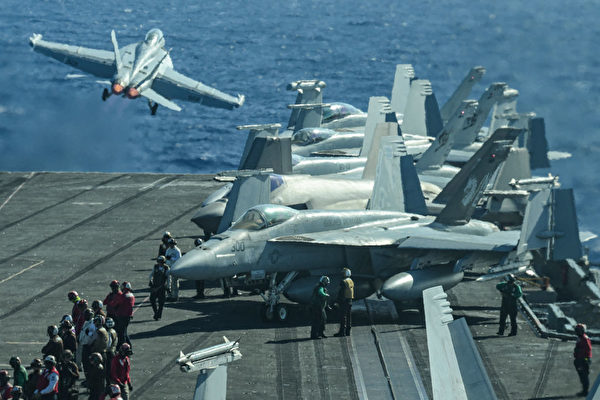The United States Navy’s Super Hornet fighter jets equipped with the air-launched version of the SM-6 missile have been discovered in the Pacific Ocean, with carrier-based SM-6 missiles recently being deployed in combat for the first time in anti-Houthi armed conflict. The deployment of these missiles in the Pacific could play a significant role for the United States in potential conflicts with China.
During operations in the Middle East, U.S. warships have launched SM-6 missiles to intercept ammunition fired by Houthi forces and have used them in ground-to-air missions. This missile is starting to take on a new role in long-range air-to-air combat, which could be a crucial development if the U.S. engages in conflict with China, bridging key capability gaps.
According to a U.S. Navy spokesperson, the SM-6 air-launched variant (ALC) is part of the SM-6 missile series and has already been deployed in combat by the Navy.
The official designation for the air-launched SM-6 is AIM-174, making it the U.S. Navy’s longest-range air-to-air missile ever deployed. In addition to its primary air-to-air mission, it is also capable of targeting high-priority ground assets and warships.
During the recent days of the Rim of the Pacific Exercise in the Pacific, several F/A-18E Super Hornet fighter jets were observed carrying SM-6 missiles aboard the USS Carl Vinson, a Nimitz-class aircraft carrier, while stationed at the Hickam Joint Base Pearl Harbor in Hawaii. The Rim of the Pacific Exercise is touted as the world’s largest international maritime warfare exercise.
The AIM-174 has been incorporated into the U.S. Navy through separate efforts from the Air Force and Navy for the acquisition of the AIM-260 JATM air-to-air missile developed by Lockheed Martin.
Observers at the Rim of the Pacific Exercise noted that the missiles on the Navy fighter jets were marked with AIM-174B, indicating they are air-to-air variants. However, it was pointed out that these missiles have undergone modifications for testing. This configuration was discovered a few years ago but has yet to be officially acknowledged by the Navy.
Justin Bronk, an air power and technology expert at the Royal United Services Institute think tank, stated that the recent public display of the SM-6 indicates that the missile’s development is nearing completion, potentially even reaching initial operational capability. He told Business Insider that this move is likely a deliberate signal of emerging capabilities to allies and Chinese military observers.
The new capabilities of extending the range of air-to-air missiles can help the Navy fill gaps in countering China’s deployment of long-range missiles, especially if a conflict between the U.S. and China were to occur in the future, where a potential war would likely be predominantly at sea, highlighting the importance of long-range strike and defense capabilities.
The air-launched SM-6 missile brings major advantages to the Super Hornet fleet, significantly extending the carrier strike group’s reach in targeting aerial threats. Bronk mentioned that this capability would be especially useful for the U.S. Navy in countering Chinese air force and naval aviation forces, as China has also been investing in the development of various long-range weapons.
Bronk further explained that the air-launched SM-6 missile capability enables the carrier strike group to engage Chinese bombers and reconnaissance aircraft much further out compared to the standard AIM-120D air-to-air missile.
The introduction of the air-launched SM-6 missile is not only essential for competition in the Pacific but also serves as a practical asset for countering Chinese warships and militarized artificial islands. Bronk highlighted that this new air-launched missile type allows for expanding the protective range beyond carrier formations without risking entry into contested airspace.

